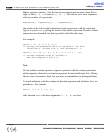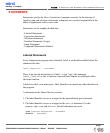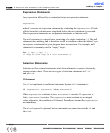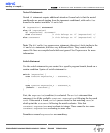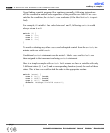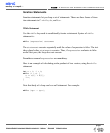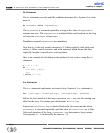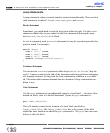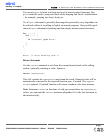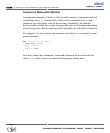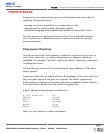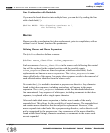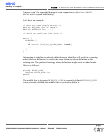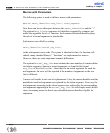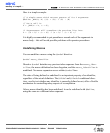
Jump Statements
A jump statement, when executed, transfers control unconditionally. There are four
such statements in mikroC: break, continue, goto, and return.
Break Statement
Sometimes, you might need to stop the loop from within its body. Use the
break
statement within loops to pass control to the first statement following the inner-
most switch, for, while, or do block.
Break is commonly used in switch statements to stop its execution upon the first
positive match. For example:
switch (state) {
case 0: Lo(); break;
case 1: Mid(); break;
case 2: Hi(); break;
default: Message("Invalid state!");
}
Continue Statement
You can use the
continue statement within loops (while, do, for) to “skip the
cycle”. It passes control to the end of the innermost enclosing end brace belonging
to a looping construct. At that point the loop continuation condition is re-evaluat-
ed. This means that continue demands the next iteration if loop continuation con-
dition is true.
Goto Statement
Use the
goto statement to unconditionally jump to a local label — for more infor-
mation on labels, refer to Labeled Statements. Syntax of
goto statement is:
goto
label_identifier
;
This will transfer control to the location of a local label specified by
label_identifier
. The
label_identifier
has to be a name of the label
within the same function in which the
goto statement is. The goto line can come
before or after the label.
mikroC
- C Compiler for Microchip PIC microcontrollers
mikroC
making it simple...
12 2
MikroElektronika:
Development
tools
-
Books
-
Compilers
page



